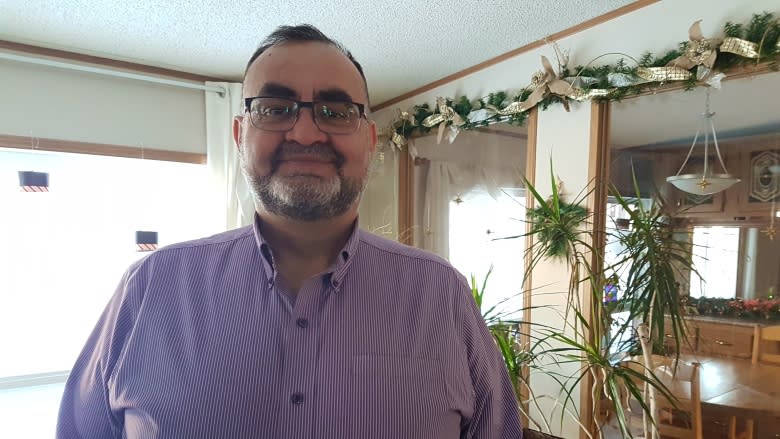Stats show glaring gap between Indigenous and non-Indigenous employment rates in the N.W.T.
There's a major gap in employment rates between Indigenous and non-Indigenous residents in the Northwest Territories, according to the latest numbers from Statistics Canada.
Last month, 52.5 per cent of Indigenous residents had a job, compared to 81.3 per cent for non-Indigenous persons.
This 30 per cent gap has remained consistent over the past 10 years. In 2006, Statistics Canada reported that 56 per cent of the Indigenous workforce was employed, compared to 86 per cent of non-Indigenous residents.
Indigenous people make up half of the territory's overall population but are the majority in smaller communities. In 2014, employment in over half of those communities sat below 50 per cent — as low as 38 per cent in the case of Behchoko.
Statistics Canada gathered the numbers through a monthly survey that randomly selected residents age 15 and up, and followed them for three to six months.
Tu Nedhe-Wiilideh M.L.A. Tom Beaulieu continues to raise the issue in the legislature.
"When you are a leader in this type of environment where there's no jobs, people hold you accountable," he says.
"I don't hear from the 44 per cent of the people of Fort Resolution that have good jobs. I hear from the other guys. They got no money."
Beaulieu says many residents have to rely on income support that may only last for two to three weeks. He calls it a "horrible situation."
The three-term member of the N.W.T. legislative assembly says there are not many options in smaller communities without government help. He has been pressuring the territorial government to invest in several key areas such as roads, to create jobs and support the traditional economy.
"There's an access road program which people really benefit from where they slash and they have a chance to run their equipment to build roads to their traditional hunting areas."
Beaulieu says the government should also set money aside to retrofit elders' homes, creating jobs and allowing elders to stay in their communities instead of being forced to move to larger centres.
"I'm not asking the government for money just to put us in the poor house. I'm asking the government to put money into communities to take us out of the poor house," he says.
"Imagine increasing [Indigenous] employment by 29 per cent. Well, it will clear up all of the social issues for sure."
Meanwhile the Northwest Territories government is working to assess the situation and plan future job training.
Last year the Department of Education, Culture and Employment released the first Northwest Territories Labour Market Forecast and Needs Assessment. It provides an in-depth look at the territory's labour market and labour force. It also projects what jobs will be in demand and the skills required to match them.
"We're going to be working with our aboriginal governments, working with industry and our communities to ensure that we're letting our residents, letting our youth know what jobs will be needed in the future," says Alfred Moses, Minister of Education, Culture, and Employment.
He says his department is currently developing a strategic plan with Aurora College to implement the training component in the Skills for Success action plan.
Moses says $1.2 million in funding was given to the small community employment support program last year. The money subsidizes the salaries of trainees and can be used to pay for training courses. Trainees must be unemployed, at least 18 years old, and live in one of the 26 eligible communities.
Moses says the program has been "very successful in our smallest communities where we see our highest aboriginal population."
Despite these efforts, Beaulieu says the territorial government is still moving too slowly and more needs to be done to see results.
"The higher the income, the healthier the population is. The higher the income, the less social issues there are."




